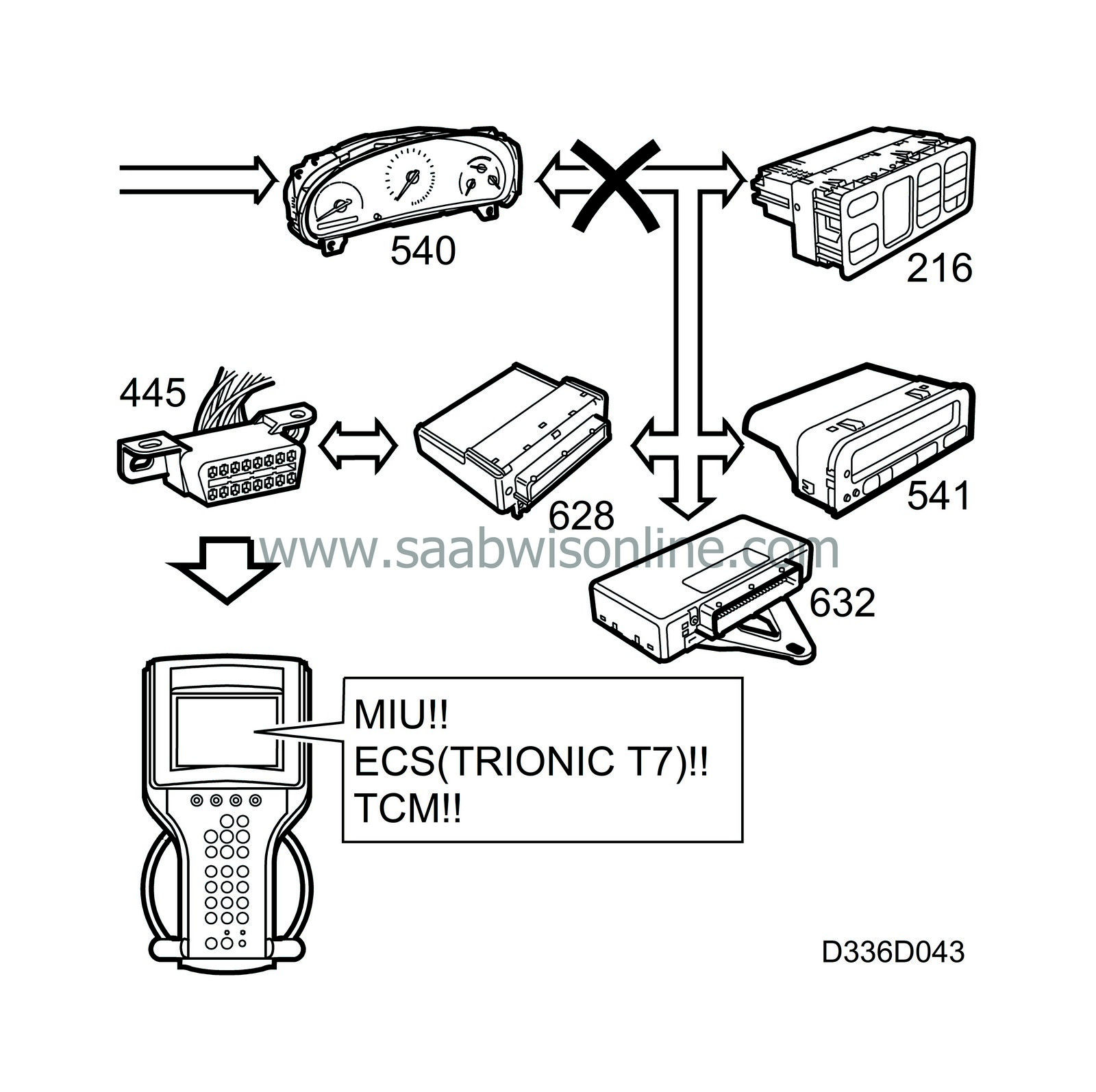Bus diagnosis
| Bus diagnosis |
Bus faults can be caused by a bus lead breaking. This could result in one or more systems disappearing from the bus concerned (I or P), depending on where the break in the wiring harness occurred.
If a short circuit occurs in a bus lead, all systems will disappear from the bus concerned (I or P).
Note that if the I-bus is short circuited, DICE will be the only bus system apart from the diesel engine control module that can be contacted with the diagnostic tool.
In the event of a grounding or power supply fault in one or more systems, these systems will no longer be able to communicate.
| Permanent bus faults |
Irrespective of the system being contacted, the diagnostic tool will first check with the aid of the DICE that all systems in the car connected to a bus are awake and in communication.
If any control module connected to a bus is missing, the diagnostic tool will show this. This means that all control modules connected to a bus are communicating correctly unless the diagnostic tool indicates otherwise with a warning.
In the case of a permanent bus fault, the text on the diagnostic tool's display will refer to a fault diagnosis procedure described in the ”Bus and diagnostics communication” category.

| Intermittent bus faults |
The Trionic T7 and TCM continuously check that all control modules supplying them with information communicate correctly. Intermittent faults in bus communication with any of these systems will cause diagnostic trouble codes to be generated in the Trionic T7 and TCM. The fault could be caused by the control module in question having lost its power supply or one of the bus leads.
In the event of intermittent bus faults the diagnostic trouble code text will refer to a fault diagnosis described in the ”Bus and diagnostics communication”category.



